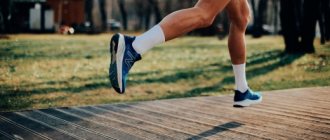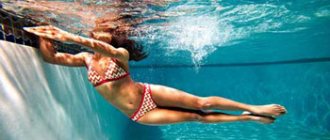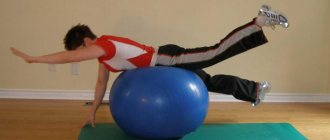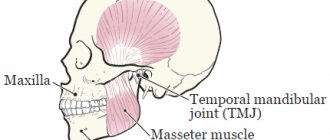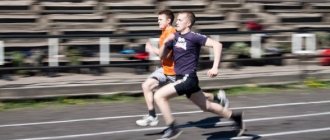You can treat with water in different ways: drink, wipe yourself, take a Charcot shower. And there is an option for therapeutic swimming. True, it is not always clear what is special about it and how this option differs from the usual one.
“Therapeutic swimming is one of the types of therapeutic exercises; it belongs to therapeutic physical education. There is a whole list of diseases for which exercise therapy is indicated, including therapeutic swimming,” says Evgeny Achkasov, expert of the National Health League, head of the department of physical therapy and sports medicine, professor of the department of hospital surgery No. 1 of the First Moscow State Medical University. I. M. Sechenova, Doctor of Medical Sciences.
This concept does not simply mean crossing a path in the water back and forth. Therapeutic swimming is a specially designed program using various devices, if necessary. “Here you no longer just need to swim with a certain technique, but you need to perform certain exercises in the water to increase the effectiveness of the training. Therapeutic swimming must be carried out under the supervision of a physical therapy doctor or exercise therapy instructor. And this is extremely important. After all, he is not just a controller of task completion, he himself selects loads, checks the effectiveness of rehabilitation, and makes sure that the person performs the exercises correctly,” says Evgeniy Achkasov. The specialist notes that, first of all, therapeutic swimming is an excellent solution for people with various diseases of the spine, especially if there are hernias. This water therapy is prescribed to strengthen the muscle corset. In addition, the therapeutic option of swimming is widely used in the rehabilitation of diseases of the musculoskeletal system, and is used in the rehabilitation of neuromuscular diseases. For posture problems, swimming is the first priority. And against this background, it is definitely recommended for children. It is also used in patients who have suffered severely from COVID-19. During the recovery phase of the rehabilitation process, it also makes sense for them to use swimming, but again in consultation with the doctor. Additionally, therapeutic swimming is used as an option for recovery from injury or surgery. But here again we are talking about a specially selected set of exercises in water, and not simple swimming.
Why do people swim underwater
In some sections of society there is an opinion that only children can dive. Therefore, if you are an adult, you should swim “seriously” and not engage in all sorts of childish things. Of course, if you are a diving athlete, no one will make any claims against you. But what to do if you are just an amateur swimmer who wants to diversify your training and enjoy it?
First, you should determine your goal - why you need to learn how to swim quickly underwater. These can be short dives to get new experiences, or long swims, and even diving and freediving. Depending on the direction of your activity, you need to draw up a specific action plan to achieve the results you need.
Secrets of scuba diving
Usually the idea of learning to scuba dive comes to people near the water while on vacation. Some guy with a tank on his back introduces himself as an instructor and offers to master everything in a short time. Self-training at home in any case ends in open water, so a beginner will definitely return to it.
Typically, a full course of such training ranges from 20 to 25 hours. Of course, with self-study, this time increases several times. After training, many questions may arise (what type of equipment is best to buy and where, with whom and when to go diving, how to continue your training). The instructor remains one of the main assistants, and most often the only adviser. For this reason, home workouts may not be effective.
But at the very least you can learn to snorkel. To do this, it is not necessary to take ammunition and scuba gear.
Key points to note
- The main rule of the process: relax and have fun. Movements underwater should be less frequent and smoother than usual. The less energy is expended, the less oxygen your body needs. This will help you stay underwater for as long as possible. Over time, the body will get used to such stress, and you will be able to swim underwater very quickly.
- Remember that water is a potential source of danger. It is extremely important to take all precautions. In this case, swimming underwater in a pool will be safer, since the depth is usually not great and there are other people near you.
- If you decide to dive in open water, try not to dive more than 2-3 meters. There must be a person next to you who is ready to help at any moment and has sufficient experience to do this.
Basic skills and safety
Pool
Despite the fact that diving is possible, necessary and interesting in open waters, it is strongly recommended that the training phase be carried out in a pool. You need:
- Completely cope with your fear , if you have one. Water is not our habitat. You need to get used to it, understand its laws and follow them. The key to success is patience, perseverance and gradually increasing the complexity of the exercises.
- Feel the water . In part, you already have this skill. But gliding on the surface is different from swimming in the depths. At first, even diving will not be easy - you will be pushed out.
- Correct breathing .
There are two key points here. First, learn to exhale without catching water in your nose. Secondly, be able to hold your breath. The longer, the less often you will have to surface. Do not neglect this stage of training - it is one of the most important, both for achieving the goal and for your safety. - Train yourself to inhale through your mouth and exhale through your nose .
- Practice the technique . Learn to dive, move, calculate the time before returning to the surface.
Exhale underwater
Open water
When you have mastered all of the above, then you can move to open waters. But remember about safety there too :
- Never jump into water without seeing the bottom.
- Make sure in advance that the depth is sufficient for a safe dive.
- Do not dive more than 3-5 meters , even if you are already experienced.
Only trained athletes can dive deeper than 3-5 meters. To do this, you need to be able to equalize the pressure, hold your breath longer, and spend more time getting up. - Calculate your strength. Always leave a supply of oxygen for ascent.
- Save energy. All movements are smooth and calm.
- Don't dive in while exhaling. Only on inhalation.
- Don't dive alone. There should be someone nearby who can back you up, pull you out himself or call for help.
- If you seriously decide to take up freediving, go down to a depth of more than 5 meters, or become an extreme sports enthusiast, even at the amateur level, then a lesson with a trainer is a must . If you swim for your own pleasure, then you can study on your own. With an instructor it will be faster and clearer, but more expensive, and it is not always possible to find a good specialist. It's up to you here.
Differences between underwater swimming styles and conventional swimming styles
Breaststroke
- Rowing with your arms is carried out all the way to your hips. In “overwater” breaststroke, the arms only reach the shoulders.
- Unlike the classic style, the body moves smoothly underwater without moving up and down.
- After the stroke, the arms extend forward and glide smoothly through the water, while the legs kick back, which is typical for the breaststroke style.
Butterfly (dolphin)
This technique, both in its classical and “underwater” versions, is much more energy-consuming than breaststroke or any other swimming style. A significant difference between the butterfly style is that the body does not make any sudden movements, but makes smooth wave-like movements, thereby propelling itself forward.
Underwater crawl
The difference between this type of rabbit and the usual one is as follows:
- legs move upward more;
- my hands can't go anywhere.
If your favorite swimming style is crawl, you will easily master its “underwater” variety, since everything here proceeds almost by analogy.
Underwater swimming includes many different styles, including combinations of them. Although the most common are the crawl, breaststroke and the slightly smaller butterfly, there are other ways to move comfortably underwater.
Underwater torpedo
The name of this style, like “dolphin”, speaks for itself - you need to swim like a “torpedo”. At this moment, the arms do not work, and the legs move in the crawl style. There are also modified versions of this underwater movement technique. For example, the arms are extended forward and the legs work in butterfly.
Arms - breaststroke, legs - freestyle
Sliding in the water occurs at the moment of being carried forward, in the so-called culmination of the hand stroke. It is possible to modify the option: the arms and legs work alternately, and the sliding is carried out between the movements of the arms and legs.
Arms - butterfly, legs - breaststroke
In this modification, the arms do not work as in the classic butterfly version, but linger near the body. After this, a slide occurs, and only then comes the next stroke.
How to learn to swim faster
- Don't tense up. Your body should be relaxed, your movements should be free and smooth. While you are straining, you are drowning and spending much more energy on movement than necessary.
- Don't forget about your feet. Often, beginners swim on only their arms, and their lower limbs practically do not work. Make sure that the latter also participate in the movement. Try counting your kicks. For example, make three strokes for each stroke.
- Master the technique. Even if you swim for the soul and not for records, look at the swimming technique in your chosen style. You won’t be able to figure out some of the subtleties on your own. Proper technique will help you swim faster and have more fun.
If you like to swim underwater, you also like to dive correctly
No one wants to accidentally injure themselves or drown, so knowing how to dive correctly is extremely important.
There are several types of dives. First, let's look at how to act if you have no support under your feet, that is, you are already in the water.
You can swim in a style that is comfortable for you, then make a big stroke with your arms, reaching to your hips. The lower part of the body smoothly moves up, and the head moves down. When your pelvis is sufficiently higher than your head, you can straighten your legs. By rowing smoothly with your hands, you will go completely underwater.
At first, it is not recommended to complicate diving with supported jumps. To begin with, it is important to learn to understand the process of diving, feel your characteristics and take them into account when diving into the water. And only then proceed to more complex diving options. If you decide to dive into the water from a support, then the most appropriate option would be to jump with your arms outstretched forward. Be careful not to hit your body on the water! You can read more about how to properly start from a bedside table in this article.
A few rules for a perfect dive from a support:
- the ideal jump angle is from 45 to 90 degrees;
- the head is located between outstretched arms;
- the chin should be pressed tightly to the chest;
- hands look forward, palms down;
- fingers indicate the direction of the dive;
- a strong kick with your legs prevents your belly from hitting the water.
A few more tips
Remember:
- When diving with two fins, it is preferable to use the crawl technique with your legs, and the dolphin technique with a monofin.
- It is easier to ascend with breaststroke.
- The butterfly technique is very impressive, but difficult to master and requires too much energy.
- To dive deeper, you need to lower your head and outstretched arms, to emerge - bend part of your body from the lower back to the tips of your fingers upward.
- To maneuver at depth, it is necessary to bend the body in the direction of the turn while simultaneously making a powerful stroke with the opposite hand.
The key to staying underwater for a long time
The main factor for comfortable swimming underwater is the ability to hold your breath for a long time. But if you can't do it, don't worry! Our lungs can be trained.
To do this, it is enough to regularly perform breath-holding exercises (for example, a “40-second cycle”: take in as much air as possible, hold your breath, slowly release all the air from your lungs, stop - each step is performed for 10 seconds), and also include Include cardio exercises in your workouts (running, race walking, cycling, skiing, swimming, etc.).
Breathing technique when swimming butterfly
Of all the types of swimming, butterfly is the most energy-consuming. It looks very spectacular: swimmers, making 2 strokes, quickly change their body position without raising their heads.
This style cannot be used without a carefully developed breathing technique, so we suggest that you familiarize yourself with its basic rules.
Algorithm of actions
The movements and breathing in butterfly work like this:
- breathing occurs during the first phase of actions - raising your hands above the water;
- the head is close to the water, looking forward, not up;
- inhalation occurs per stroke cycle;
- absorption of oxygen is done approximately in the middle of carrying the hands above the surface of the water. The inhalation should be short;
- exhalation occurs after immersing the shoulders under water.
This breathing technique is mastered much slower than others, so you will have to be patient.
Cyclicality
The ideal breathing cycle in butterfly is called:
- Inhale quickly during the stroke, with the head in the highest position.
- Slow exhalation occurs when diving under water until a new stroke.
Depending on experience, swimmers have two cycling options:
- One stroke cycle per breath cycle. A simple method suitable for beginners.
- Two stroke cycles per breath cycle. First you need to inhale, then stroke with your head down, after which you inhale again on the next stroke.
To prevent the cycle from being disrupted, do not inhale too often. If you inhale oxygen every time you raise your arms, this will lead to hyperventilation of the lungs.
It is important to breathe synchronously and make movements with your hands, so you cannot do without practice. The first thing you can do is to make circular movements of your arms forward in a standing position, while inhaling when your arms just begin to rise behind your back, and exhaling smoothly when they lower.
You can make the exercise more difficult by engaging your back muscles (breathing occurs in the same way):
- on land, lie on your stomach on the mat, place your arms straight in front of you;
- lift your chest off the floor, and at the same time, spread your arms to the sides, placing them behind your back - inhale;
- returning to the starting position, lift your straight legs, making a movement similar to a boat - exhale.
How to perform the movements is clearly shown in this video:
Ways to increase movement speed underwater
- Perform breathing exercises.
In addition to the above, you can perform the following exercises for swimming underwater in a pool. The execution technique can be either static or dynamic. Exercises can be alternated by day, or can be performed in one workout at once.
Exercise for statics:
- Grasp the edge with your hands.
- Take a deep breath and hold your breath.
- Immerse yourself completely in the water and perform freestyle or breaststroke leg movements until you get enough oxygen.
Exercise for dynamics:
- Turn your back to the side and sit down a little.
- Take a deep breath.
- Stretch your body “in a string” - arms straight, directed forward, head between them. In this position, push off with your feet from the side.
- Perform alternating movements with your arms and legs in the breaststroke style.
Be sure to monitor your health and gradually increase your load. The result will not be long in coming after just a few sessions!
- "Nature loves simplicity."
Try not to get hung up on complex types of movement in the initial stages. How fast you can swim underwater certainly depends on your technique. However, complex elements will take much more energy from you. Accordingly, you can only stay under water for a very short time. Having mastered the basic skills of swimming underwater, you can choose the most suitable movements for yourself.
- Develop agility.
Watch the fish - they maneuver perfectly in the water, turning only part of their body. To turn, just point the upper part of your body in the desired direction. For greater effect, you can use the opposite hand to make a powerful stroke (for example, if you need to turn right, then use your left hand).
You can move up and down faster using the same analogy. To go deeper, just point your outstretched arms down. To return to the surface, you need to arch your lower back all the way to your fingers.
- Safe ascent.
The most comfortable and safest in this case will be the breaststroke. If possible, push off the bottom with your feet. This will give you speed to move, even if your strength is already running low.
How long does the training last?
Usually everyone swims in the pool according to their desire and ability. On average, training takes 30-40 minutes directly in the pool; some swim for an hour.
In the case of therapeutic swimming, the situation is different. And here it is impossible to predict how long the training will last in advance. “It’s impossible to say here, everything is individual. If we are talking about swimming, when we want to strengthen the body, the standard recommendation may look like this - go to the pool three times a week for 45 minutes to an hour of training. But you should still navigate according to your feelings. If we are talking specifically about therapeutic swimming, when we are rehabilitating, we cannot say in advance about the time, since the doctor will select the load, create a set of exercises, and the number of repetitions. And this is all individual. The duration of both the lesson and the course of therapeutic swimming as a whole will depend on the individual characteristics of the person, on what disease we are treating, as well as on what concomitant diseases the person has,” says Evgeniy Achkasov.
Do I need special equipment?
Swimming with fins can be a very enjoyable process, and many have noticed that they move much faster with such a device. However, as practice shows, you can swim quickly underwater without fins.
When putting on fins, you should also consider the style in which you will swim. For regular fins, crawl is good, while for monofins, dolphin is good. Therefore, at first it is better to exercise “with your own weight” so as not to overload yourself.
Where to learn to swim
In a swimming pool. It has several serious advantages over open reservoirs.
- Calm water. Even small waves will make your training much more difficult.
- Pure water. At first, you will periodically slurp it with your nose and mouth. It is better to take a sip of water with bleach than with some kind of infection.
- Boards and devices for swimming. To perform various exercises, you will need to hold on to the edge of the pool and use boards and sticks, which are available in any such facility.
- Availability of instructors. You won't drown. Anyway.
The benefits of swimming underwater
Perhaps you, like many swimmers, love to swim underwater in the pool. Or maybe you're just thinking about getting started. The benefits of this sport cannot be overestimated.
- Beneficial exercise for muscles and joints. Everyone knows that it is much more comfortable to perform various movements in water, because the load is evenly distributed throughout the body. During the work, almost all muscle groups are involved - and all this without harm to the joints. No “dry” workout can boast such an effect!
- Training for the respiratory muscles. By regularly holding your breath, your lung capacity increases. This has a positive effect on their ability to absorb oxygen. However, this should not be taken to the point of fanaticism - excessive holding of breath can have a detrimental effect on brain function.
- Improving the quality of blood circulation. All of the above factors play a role here. Thanks to the constant work of the muscles, as well as the abundant saturation of the body with oxygen, blood flows to the brain faster. Accordingly, the body renews itself faster and receives useful nutrients - and this is the real guarantee of health and longevity!
Pool training program for men
Basic training in the pool for men is practically no different from the program for women. They differ only in the order of styles used. Men need to start with the most difficult technique - butterfly, then continue with breaststroke or freestyle. Those who get tired quickly are allowed to take 15-20 second rest breaks. Each style needs to actively swim 50-300 m. For the second part of the training, you need to leave applied styles or swimming with additional means - a board or calabashka. The lesson ends again with calm movements.
Swimming records
Perhaps you have a question - are there “underwater racers” nowadays? After all, the best world results have been established in every sport. So, the answer is yes, they exist! The world record for underwater swimming was set by 47-year-old Dane Stig Severinsen in 2020. He swam 202 meters with fins, holding his breath for 2 minutes 46 seconds. And in 2012, Severinsen spent 22 minutes underwater without oxygen! As you can see, we all have something to strive for.
Of course, we hardly want to set a new record in the Guinness Book, but each of us can train our breathing and swim underwater!
Tags: diving swimming underwater benefits of swimming
Theory and practice
Before diving, you need to study the theory of diving and learn how to do it correctly. Usually, classes begin only with an experienced partner. They do this alternately. One person goes down, and the second one insures him at this time. After this, partners change. Diving without oxygen is prohibited. First you need to take a deep breath and then slowly dive in. Those beginners who neglect this rule may choke. The brain can simply give a reflex command to inhale involuntarily.
Diving for a long time is very dangerous. It is best to make a plan before starting a dive that will take into account weather conditions. Any swimmer should know what to do if danger arises. Do not use excessively heavy ballast. This may delay the equalization of pressure differences. Before diving, it is better to remove the tube from your mouth.
If ear pain appears, stop further diving to avoid rupture of the eardrums. It is forbidden to quickly release all the air. This may interfere with alignment. You should not look down while diving. Ascent is always done gradually. Between dives take breaks of at least twelve hours. For beginners, shallow water training is required.
Typical beginner mistakes
For those who are just starting to swim, it is important not to make mistakes systematically, otherwise they will learn the wrong breathing technique. The following rules will help with this:
- Always monitor your breathing rhythm. Haste is not the best helper. Practice your breathing technique on land and only then start training on the water.
- Don't hold your breath. When training, this is acceptable at first, as long as there is a fear of exhaling into the water. Then you need to exhale immediately after immersing your face in the water.
Regularly performing the above breathing exercises will allow you to swim quickly and without losing a lot of strength.
Water aerobics: 18 exercises in water for a slim figure
Sets of water aerobics exercises selected for any vacation spot: the sea, a swimming pool, and even a water park.
Heat! Now is the perfect time to take a dip in the refreshing H2O. And if you're already in the water, take advantage of the opportunity to burn calories and tone muscles, because here it will happen faster than in an air-conditioned gym. Why? The resistance of water is 12-15 times higher than that of air. Therefore, you can burn three times more calories than walking at an average pace - and feel fresh!
If you swim in a pool, try...
Burn twice as many calories as a regular workout.
You can lose weight faster and strengthen your muscles if you perform weight loss exercises as intensely as possible for 30 seconds. Then rest or float on your back for 30 seconds. Just 30 vigorous moves in the pool and you'll lose about 300 calories.
Push-ups on the pool stairs.
Will make you stronger in seconds.
Being in the water makes your body lighter, making it easier to do full push-ups, which strengthen your arm muscles and shoulder girdle, says Rob Sharino, who has 16 years of experience as a personal trainer in Brooklyn, MA.
Start doing the exercise for losing weight on your arms in the shallow part of the pool, place your palms on the top step of the ladder, your feet should rest on the bottom of the pool. Slowly bend your elbows and do push-ups, making sure that your face does not submerge in the water. Extend your elbows and repeat the exercise.
Perform 2-3 sets of 15 push-ups at a slow pace.
Deep lunges waist-deep in water.
Shapes the hips without putting excess stress on the knees.
The jumping you do in the water reduces the stress on your ligaments and joints.
Standing waist-deep in water, lunge forward with your right leg, your right thigh should be parallel to the bottom of the pool, bend your left knee, hands on your hips. Take a quick jump, cross your legs, and throw your left leg forward when landing.
Repeat 15-20 times.
Blender.
Strengthens all leg muscles.
When you exercise in water, your body experiences resistance from all directions, a 360-degree circle, says Jay Cardiello, a certified strength specialist in New York City.
Standing waist-deep in water, sharply throw your right leg forward. Pause, then take your leg back, overcoming the resistance of the water, return to the starting position. Move your leg to the side, then back.
Perform weight loss exercises, alternating legs, 10-15 times.
Helicopter.
“Running” in water to quickly burn fat.
This exercise gets your blood flowing and burns calories, says Mary Sanders, Ph.D., spokeswoman for the American Council on Exercise and director of Water Fit Wave Aerobics. Squat down - your chest should be immersed in the water, then intensively “run” in place, counting to six. Repeat for 1 minute, then rest for 15 seconds. Repeat two more times.
On the beach ….
Walking in water.
Burns up to 180 percent more calories than walking on the sidewalk.
The combination of water and sand will force the muscles of the lower body to overcome enormous resistance. Researchers have found that walking in hip-deep water burns more calories, but even ankle-deep water is enough to strengthen leg muscles.
Jumping over waves.
You won't even realize you're doing squats.
Go into the water up to your waist, bend over and jump over the oncoming wave. Try jumping backwards and to the sides, or alternating your legs.
“Pull and push” in the ocean waves.
Play a balancing game for sexy abs.
Just stand straight and motionless among the waves and don't let them knock you down - this water aerobics exercise strengthens all the muscles of the body. Try maintaining your balance while standing on one leg to engage larger muscle groups. You can arrange a competition with your friends to see who can remain motionless the longest (complicate the exercise by facing the beach).
On a family vacation, try….
Random running.
The calories will disappear.
On the count of 3, everyone begins to walk or run in a zigzag direction from one end of the pool to the other, then return back in the same way - this is Sanders’s method of losing weight. Water flows created during movement in different directions increase its resistance.
Circles on the water.
Massage your thighs, creating a circle around them.
Walk as quickly as possible around the circumference of the pool at a depth of about 1 meter (the more people doing the same, the better). Do about 20 laps, then change direction and walk another 10 laps. The resulting streams of water will massage your thighs like a Jacuzzi.
Game "Fetch the ball".
Burns 175 calories in 20 minutes.
Throw a beach ball to the other side of the pool and see who can bring it back the fastest. You won't even realize you're doing short distance swims.
To be continued…..
In Part 2 of the article you will learn more about the following water aerobics exercises: with an inflatable mattress, circle, ball, short and long distance swimming, and even special weight loss exercises for girls who do not want to get their hair wet.
Water aerobics exercises for a slim waist
Aquafitness classes can take place both in a group and independently
- First, you need to remember a few simple exercises that will allow you to get your waist in order in just a few weeks. We continue all movements for no more than one or two minutes. This number of approaches will provide excellent results and will not let you get tired.
- For better retention on the water, as well as to increase the load, you should use special peon-plastic equipment, which can be purchased at any sports store.
Rotation
- Let's spread our legs wider and begin to rotate our body in different directions - right, left.
- Hands remain at the waist or raised up.
Tilts
- Now we don’t turn around, but lean in different directions, including in front of us.
- We do not touch the water, we move slowly, without sudden movements.
Downloading the press
- You should enter the water so that it is at chest level.
- We put our feet together and our hands on our waists and start turning only with our pelvis.
Turns
- Legs straight, arms apart. Raise your legs to the surface, first bending them at the knees. We make 60 turns with our legs, first in one direction, then in the other direction.
- The second version of this exercise is to lift the legs, as in a cabaret dance with bending the knees while lifting.
The second exercise to improve your abs
- The water is at the same level as in the first case - chest-deep.
- You should clasp your hands on your chest, and for the best effect, take foam equipment. We move our hands away from ourselves and back one by one.
Popular posts
- Sauna for weight loss Procedures in the sauna To ensure that the body warms up and sweats evenly, you should change positions: on your side, on…
- Bath wrap Features of body masks There are many recipes for body masks. Some of them are aimed at...
- Ikea bookcase Ikea bookcases In the age of high technology, books are increasingly inferior to other modern sources of knowledge.…
- Corridor made of panels Materials, their pros and cons Each of the materials that can be used for finishing…

